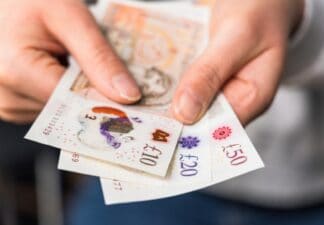The FTSE 100 index has never exceeded 7,800. I believe that could be about to change.
This week, the FTSE 250 hit an all-time high as investors rushed to buy into the UK’s improving economic outlook. I think this optimism could spill over into the FTSE 100 as the global economy starts to recover from the coronavirus crisis.
FTSE 100 index composition
Unlike the FTSE 250, the FTSE 100 is more of an international index. More than 70% of its profits come from outside the UK. That means the index is more of a barometer of global economic health rather than UK economic activity.
Its main constituents are also located in more economically sensitive sectors. Industrial metals and mining companies make up 11% of the index.
Non-renewable energy companies, such as Royal Dutch Shell and BP, make up another 10% of the index, and banks make up 9%. Together, these three sectors account for a third of the FTSE 100.
Mining, oil and financials have been some of the worst affected sectors by the pandemic. Falling interest rates have slashed bank profits, industrial disruption has increased costs for resource companies, and the low oil price has caused record losses at Shell and BP.
But the good news is, these headwinds now seem to be falling back. The oil price has recovered over the past few months. Commodity prices, such as copper and iron ore, have increased to levels not seen for several years. While banks are still struggling with low interest rates, there’s growing speculation that policymakers may increase rates faster than initially expected.
And what about the other sectors in the index? Well, shares in supermarkets and other retailers, which account for nearly 10% of the FTSE 100, should benefit from increased consumer spending and lower costs as the economy reopens. Meanwhile, pharmaceutical and biotechnology companies, such as AstraZeneca and GlaxoSmithKline, are already riding high on growing healthcare demand worldwide.
Risks ahead
All of the above leads me to conclude that we could see a bumper performance from the FTSE 100 over the next 12 months. The index may not print a high above 8,000, but that doesn’t mean it won’t put in a strong positive performance.
Of course, such a performance isn’t guaranteed. If different mutations of coronavirus cause the global economy to go back into shutdown mode, the recovery could fall apart. This may well cause the FTSE 100 to fall back. Government initiatives to increase corporate taxes around the world could also reduce corporate profitability, which would impact company valuations.
But these are just some of the challenges blue-chip businesses face at present. However, I’d buy the FTSE 100 based on its improving outlook. Yes, the index will face some headwinds as we advance but, on the whole, I believe the environment has improved dramatically for its constituents over the past few weeks and months.







